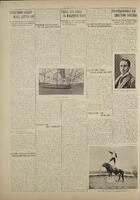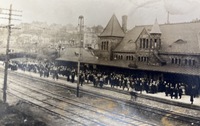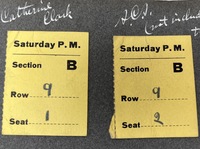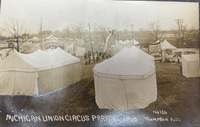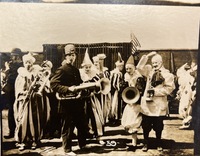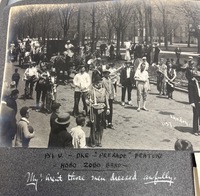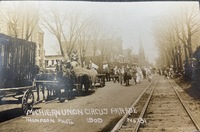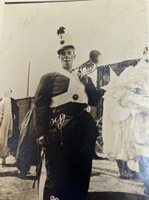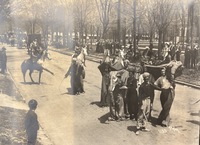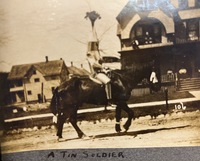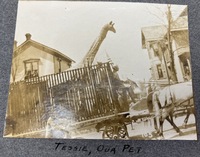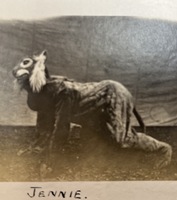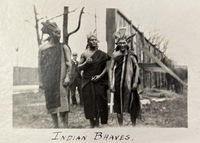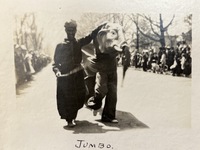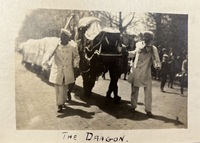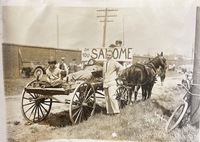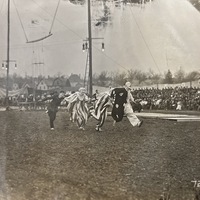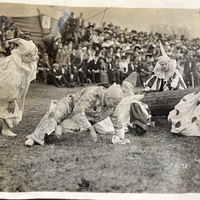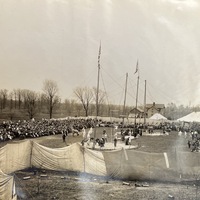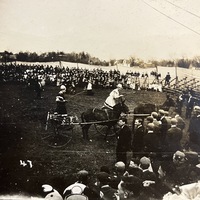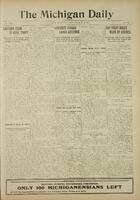Hometown Show!
The Union Circus
In May of 1909, the residents of Ann Arbor were left agog as tigers, elephants, monkeys, and giraffes thundered down State Street. Or rather, they would have been, if any of those exotic animals had been real.
Instead, onlookers were largely amused as they watched young men attending the University of Michigan dance and trot down the city's busiest thoroughfare dressed in various animal costumes. The "thundering" sound that proceeded them came from a combination of brass bands, a rolling steam engine, and an assortment of wagons. This was The Union Circus.
During the first few decades of the 20th century, the Michigan Union was the biggest student organization on campus (Holdship, 2019). In a bid to raise money, the organization's committee voted to run a show-stopping fundraising event - a hometown circus.
The "Peerade" Moves Down State Street
Following an a rather calamitous “prank” involving the Ringling Brothers’ elephants and a handful of firecrackers in 1900, famous circuses began avoiding the city of Ann Arbor (University of Michigan, 1958). The Michigan Union seized upon this particular entertainment drought. With students performing the main events and sideshows, and with all necessary tent infrastructure rented from a Chicago company, the circus commenced.
The christened ”Peerade” kicked off the event, starting around E. Liberty and proceeding down S. State Street. Thousands of bystanders lined the road and trolly track to watch the opening act. Marching bands accompanied by Russian and Scottish dancers, comedians on wagons, and a strange giraffe puppet were ushered along by energetic clowns and knights in armor (Holdship, 2019). Once the motley crew of costumed actors reached Ferry Field, the show could begin in earnest.
-------------------------------------------------------------------------------------------------------------------------------------------
The Butt of the Joke: People of Color Amongst the Animals
Despite the joyful crowds and laughing performers, a disturbing air of prejudice threads its way through the event. Modern viewers may be startled by the regular appearance of blackface in the Union Circus records. Blackface, the highly offensive practice of white individuals painting their faces to imitate black people, was a popular form of entertainment from the early 19th to mid 20th centuries. The theatrical form began in minstrel shows, but easily transitioned into vaudeville and circus performances (University of Pittsburgh, 2022).
In addition to mocking the black community, many of the Union Circus performers dressed in stereotypical Native American, South Asian, and East Asian attire. Many of the circus acts depicted fictionalized characteristics of these oppressed communities- there was heavy focus on showing indigenous men as brutish while exoticizing the Asian characters.
It is important to note the Union Circus event occurred less than a month after the University of Michigan’s first black fraternity, Alpha Phi Alpha, was formed (University of Michigan). Little regard was given to how the circus performance would impact fellow students.
-------------------------------------------------------------------------------------------------------------------------------------------
In the Ring
Following the parade, circus attendies who purchased a ticket could watch the main performance at Ferry Field. The Union Circus transformed the empty athletic field into a two-ring arena for clown skits, a chariot race, and harrowing acts from the psudo-exotic animals. Some of the side-show acts were stationed around the arena, but the majority took place back on E. Liberty (Holdship, 2019).

